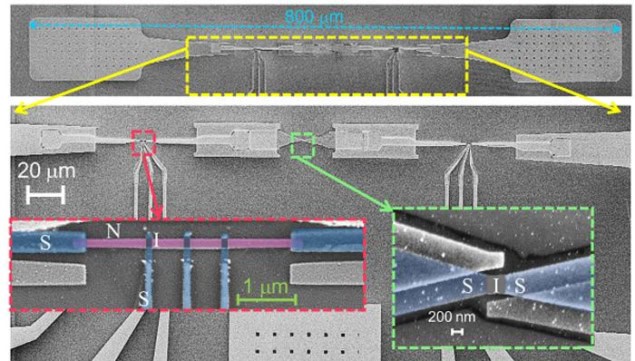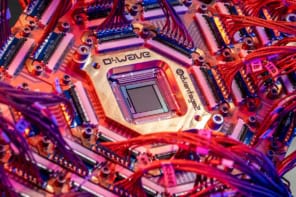
How does a Josephson junction, which is the basic component of a superconducting quantum bit (or qubit), release its energy into the environment? It is radiated as photons, according to new experiments by researchers at Aalto University Finland in collaboration with colleagues from Spain and the US who used a thermal radiation detector known as a bolometer to measure this radiation directly in the electrical circuits holding the qubits. The work will allow for a better understanding of the loss and decoherence mechanism in qubits that can disrupt and destroy quantum information, they say.
Quantum computers make use of qubits to store and process information. The most advanced quantum computers to date – including those being developed by IT giants Google and IBM – use qubits made from superconducting electronic circuits operating at very low temperatures. To further improve qubits, researchers need to better understand how they dissipate heat, says Bayan Karimi, who is the first author of a paper describing the new study. This heat transfer is a form of decoherence – a phenomenon by which the quantum states in qubits revert to behaving like classical 0s and 1s and lose the precious quantum information they contain.
“An understanding of dissipation in a single Josephson junction coupled to an environment remains strikingly incomplete, however,” she explains. “Today, a junction can be modelled and characterized without a detailed knowledge of, for instance, where energy is dissipated in a circuit. But improving design and performance will require a more complete picture.”
Physical environment is important
In the new work, Karimi and colleagues used a nano-bolometer to measure the very weak radiation emitted from a Josephson junction over a broad range of frequencies up to 100::GHz. The researchers identified several operation regimes depending on the junction bias, each with a dominant dissipation mechanism. “The whole frequency-dependent power and shape of the current-voltage characteristics can be attributed to the physical environment of the junction,” says Jukka Pekola, who led this new research effort.
The thermal detector works by converting radiation into heat and is composed of an absorber (made of copper), the temperature of which changes when it detects the radiation. The researchers measure this variation using a sensitive thermometer, comprising a tunnel junction between the copper absorber and a superconductor.

Anomalous Josephson effect appears in a topological insulator
“Our work will help us better understand the nature of heat dissipation of qubits that can disrupt and destroy quantum information and how these coherence losses can be directly measured as thermal losses in the electrical circuit holding the qubits,” Karimi tells Physics World.
In the current study, which is detailed in Nature Nanotechnology, the researchers say they measured continuous energy release from a Josephson junction when it was biased by a voltage. They now aim to find out how their detector can sense single heat loss events when the Josephson junction or qubit releases energy. “At best, we will be able to count single photons,” says Pekola.



